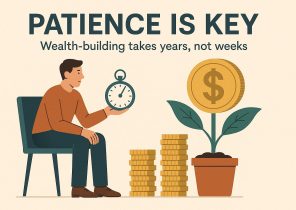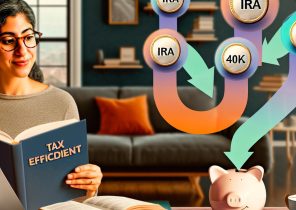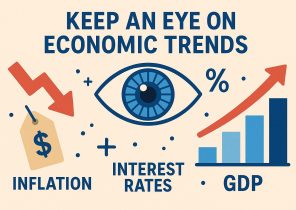Understanding Investment Losses
Every investor, regardless of experience, encounters losses at some point during their financial journey. These occurrences are an integral part of the investment landscape, providing crucial opportunities for learning and growth. By analyzing and understanding these setbacks, investors can improve their strategies and decision-making processes, ultimately enhancing their overall investment experience.
The Nature of Investment Losses
Investment losses can arise from a variety of factors, including market volatility, economic downturns, and personal errors in judgment. Often, these losses are unavoidable, underscoring the importance of preparation and risk management in investment planning.
Common Causes of Losses
One of the primary factors leading to investment losses is market volatility. Market volatility refers to the fluctuations in investment prices that can affect the value of investments, sometimes significantly and unexpectedly. This unpredictability can present substantial risks, especially for short-term investors who are unable to ride out the fluctuations.
Another significant contributor to investment losses is poor diversification. When investors concentrate their assets in similar types of investments, they increase their exposure to risk. For instance, if an investor allocates a large portion of their portfolio to a single sector, the downturn of that sector could lead to disproportionate losses.
Evolving economic conditions also play a crucial role in influencing market dynamics. Changes in interest rates, inflation, and geopolitical events can cause shifts in market conditions that may impact investment performance. Understanding these broader economic factors is essential for anticipating potential challenges and adjusting investment strategies accordingly.
Furthermore, emotional investing often leads to suboptimal outcomes. Decisions driven by fear during market downturns or greed during bullish markets can result in significant financial setbacks. Maintaining a level-headed approach and sticking to a well-thought-out investment plan can help mitigate these risks.
Learning from Mistakes
Recognizing and understanding personal mistakes is crucial for growth in the realm of investing. By identifying the root causes of losses, investors can develop more resilient and informed strategies for future investments.
Evaluating Past Decisions
Analyzing previous investment choices is a vital component of learning. Investors should consider several aspects when reviewing their past decisions. Firstly, it is important to examine your process. Reflecting on the research conducted and the rationale behind each decision can provide insights into the strengths and weaknesses of previous approaches.
Additionally, investors should strive to identify patterns in their decision-making. Detected recurring mistakes can serve as warning signs to prevent future errors. Recognizing these patterns allows investors to address specific issues in their strategy and decision-making process.
Seeking feedback from others is a valuable component of the learning process. Engaging with financial advisors or joining investment community groups can provide constructive feedback and fresh perspectives. Such interactions can illuminate aspects of investment strategy that may have been previously overlooked.
Adapting Strategies
Once mistakes have been understood, it is essential to adapt and refine investment approaches accordingly. Enhancing analytical skills is one of the primary steps that investors can take. Keeping knowledge up-to-date on market trends and financial tools enables investors to make more informed decisions.
Improving risk management practices is another crucial area of focus. Implementing strategies such as stop-loss orders and further diversification can help mitigate potential losses. These measures provide additional safeguards against unforeseen market movements.
Moreover, developing a long-term perspective is key. Embracing patience and maintaining a broad view on investment goals can help investors withstand short-term fluctuations. By focusing on long-term objectives, investors can navigate temporary setbacks with better composure.
Resources for Learning
Continuous learning is an essential component of successful investing. Investors have access to a wealth of resources that can aid their continual learning and understanding of the market.
For instance, Investopedia offers comprehensive articles on a wide range of investment topics, making it an excellent resource for investors looking to enhance their knowledge.
Similarly, Khan Academy provides free courses on economics and finance, offering invaluable educational material for those interested in learning more about financial concepts.
edX is another valuable platform. It hosts courses from leading universities that cover the fundamentals of investing and financial markets, providing a more formal avenue for education.
Engaging with the Community
Participating in investment communities, both online and offline, can further enhance learning. Online platforms such as Reddit Investing Community allow investors to engage in discussions and share experiences with others. These interactions can provide insights and facilitate a deeper understanding of various investment strategies.
Additionally, local investment clubs offer a supportive environment for knowledge sharing and networking. Engaging with peers in such forums provides opportunities to learn from others’ experiences and gain practical insights into different investment approaches.
Conclusion
Investment losses are a natural part of the journey for all investors. By examining past mistakes and adapting strategies accordingly, investors can transform losses into invaluable learning experiences. Through ongoing education and active participation in investment communities, investors can enhance their proficiency and resilience in the face of future challenges. Investing is a dynamic field that requires constant learning and adaptation. Recognizing this reality and actively seeking opportunities for growth can lead to a more rewarding and successful investment experience.
This article was last updated on: September 15, 2025








